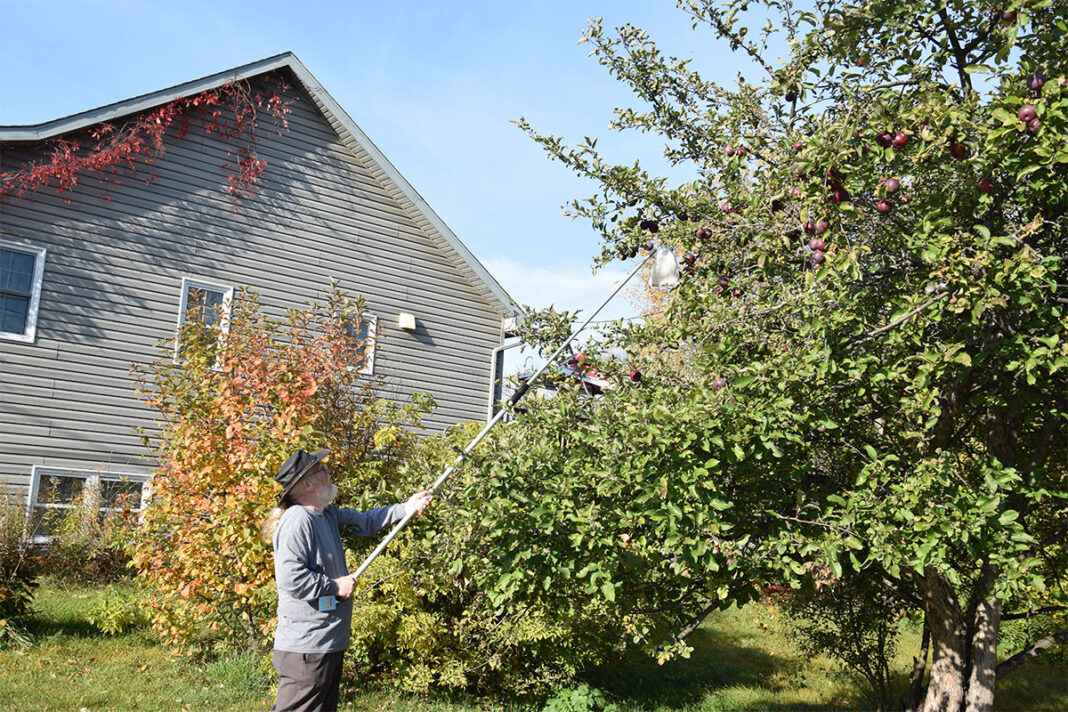MANITOULIN—The old English proverb, “Eat an apple on going to bed, and you’ll keep the doctor from earning his bread,” is probably better known by its modern appellation: “An apple a day keeps the doctor away.” There is a reason that old saw has stood the test of time—it contains a heap of truth along with its delicious nutrient load.
Apples are a great source of nutrients, including fibre, vitamin C and antioxidants which can help support healthy digestion, brain health and weight management (although too many may not help with the latter). Studies also suggest that apples protect against a host of chronic diseases that include cancer, heart disease and, despite their sugary-ish goodness, type 2 diabetes.
Apples are nutrient-dense fruits, meaning they provide a lot of nutrients per serving, and the best of the bunch for fibre are the Honeycrisp or Granny Smith varieties.
By adding apples to your diet, you can reduce your risk of heart disease or cancer, the top two leading causes of death in Canada and the US. And the benefits aren’t small; a study of nearly 40,000 people found that those who ate apples were 13 to 22 percent less likely to develop heart disease. The case is not as clear on cancer prevention, but since they are loaded with antioxidants, it seems likely.
Not only are apples injurious to a doctor’s tax bracket, they’re also a real feel-good dietary option thanks to their assisting role in releasing serotonin—the don’t worry be happy chemical. Serotonin carries messages between nerve cells in the brain and throughout your body, playing a vital key role in body functions such as mood, sleep, digestion, nausea, wound healing, bone health, blood clotting and… wait for it… sexual desire.
But it isn’t all happiness, sunshine and good health. Commercially grown apples reside firmly on top of the list of fruits and vegetables containing the highest pesticide residue each year. Experts advise washing the fruit before consuming, even if you don’t plan on chomping through the skin.
Gentle is the key, both when it comes to cleaning the fruit and harvesting. As anyone who has dropped an apple on the floor can attest, being rough with apples will quickly cause them to bruise and begin to rot. Being gentle is important when harvesting the fruit. Never pull the apple away from the branch, use an upward and twisting motion—it the apple ripe for the picking, it should come away easily.
In choosing which varieties to grow, keep in mind that, if you want to store your apples longer, crisper varieties, such as Granny Smith, tend to last longer than softer varieties like Red Delicious. Later season apples with a higher sugar content and a firmer texture are the best storage bet. And make sure the apples that do not have any soft spots or bruises on them—the aforementioned gentleness applies.
Apples should be stored in a cool, dark place with good ventilation. Pick a place that isn’t too warm or cold. The best storage temperature ranges from 1° to 1.5° Celsius (30° to 35° in old school Fahrenheit) with 90 to 95 percent relative humidity. Of course, you should go without saying that you should clean away any dirt or residue—but we are going to say it anyway.
One strategy is to wrap each apple separately with newspapers so they avoid touching each other and keep the ethylene gas down. In fact, keep stored apples away from other fruit and veggies, as that gas is what hastens the ripening. Apple can transfer their flavour and promote the growth of mold in other foods
Freezing apples is another great way to increase the shelf life of apples. When the apples are frozen, the enzymatic activity of these fruits slows down, ultimately leading to a reduced rate of ripening.
Dehydration is one of the most preferred food preservation methods, while canning is also popular and simple method to preserve apples and one that helps retain their delicious flavor all year.
Good housekeeping is particularly important when growing apples. Clear away any fallen apples from around your trees and do not compost them in your yard. A great strategy is to offer local hunters your grounded fruit, they will often even come and collect them for you. Don’t consume them yourself, apples on the ground may have a mould that produces the mycotoxin patulin. That toxin also often occurs on apples that are partially rotted (patulin can cause nausea, vomiting and diarrhea).
The scourge of anyone who grows apples, this writer included, are worms. The two main culprits are codling moths and apple maggots—hence the pesticide load found in commercially available apples.
Codling moth traps provide a pesticide-free way to reduce the codling moth population (and also to detect moth activity). Hung in the tree, preferable on the outer branches, the traps contain a pheromone that lures in the male codling moth—no male, no baby codling moths.
After your apple tree has finished flowering and the fruit is beginning to set, you can spray the tree with Spinosad, a naturally-occurring pesticide—repeating about every two weeks for about three to four applications. Spraying should begin in late March or early April and end by late May.
As for apple maggots, the aforementioned good housekeeping practices are especially important when it comes to these little beggars. You can actually disrupt the pest’s lifecycle in one go if you get to the fallen fruit before the maggot can escape into the ground. Other strategies include sticky traps, or more laboriously, putting bags around the fruit (make sure you cut little corners off the bags to let the moisture out.
So, an apple a day is a great way to stave off health issues, but you might prefer to snack on them earlier in the day that the original proverb suggests. By all accounts an apple can certainly brighten your day.





